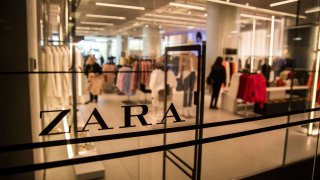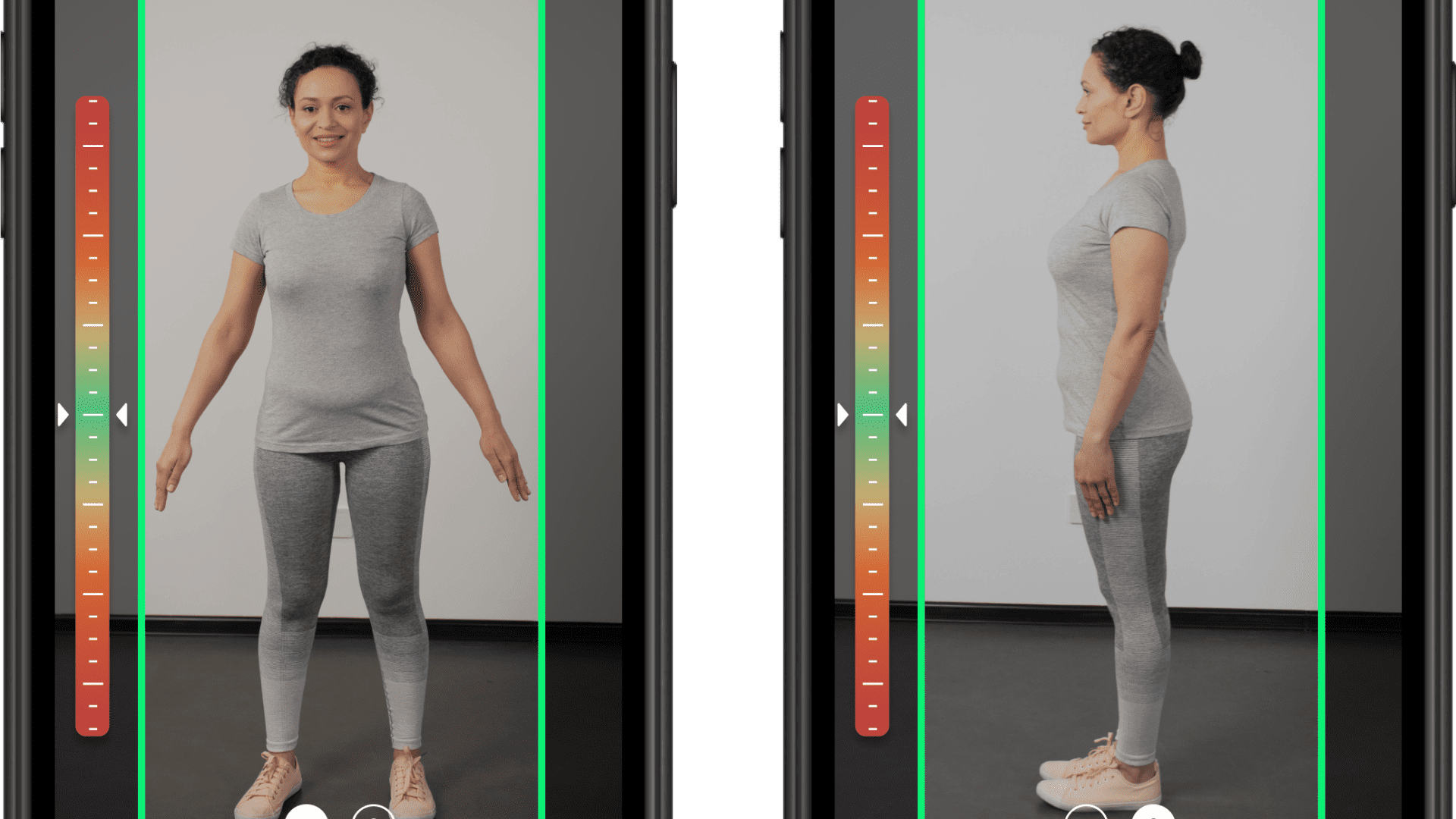
- With some fitting rooms still closed and with more people shopping on the internet for apparel and footwear, return rates have skyrocketed during the Covid pandemic.
- A survey from Coresight Research found that 42.4% of consumers in the U.S. returned unwanted products from March 2020 to March 2021, and most of that was clothing.
- With the health crisis serving as a wake-up call, retailers including the biggest in the country, Walmart, are looking for ways to fix the fitting-room dilemma.
On a recent trip to the fast-fashion retailer Zara, 20-year-old Katherine Hearden loaded up on tops, shorts and dresses in multiple sizes.
With Zara's dressing rooms still closed due to Covid-related restrictions, she knew she wasn't going to be able to try anything on in that store. So instead, Hearden checked out and schlepped across the street with her dad to another department store, where she grabbed a random pair of jeans and popped into an open fitting room. Her plan all along was to use this store to try on her Zara picks and, unabashedly, send her dad back to Zara to return what she wasn't going to keep.
"My poor dad," said Hearden, a student at Boston College, in an interview. "We make him wait in lines everywhere we go."
Get New England news, weather forecasts and entertainment stories to your inbox. Sign up for NECN newsletters.
Hearden's experience underscores a bigger dilemma that clothing companies have been grappling with for years, but one that was especially illuminated during the pandemic. Retailers from Gap to Lululemon to American Eagle had to close stores to customers for a number of weeks last spring. And even as clothing stores began to reopen, many companies still opted to keep fitting rooms closed, in an attempt to prevent the spread of Covid. Some of them, like Zara's, remain closed in parts of the United States.
The headaches for consumers are somewhat obvious: Not being able to try on items in stores means potentially stocking up on extra sizes, like Hearden did, to later see what works at home. Shoppers tend to employ a similar strategy when looking for clothes or shoes online — they'll buy a dress in two or even three sizes — which has increasingly happened over the course of the health crisis. For businesses, this chain of events sends return rates skyrocketing. And that comes with a cost. With the Covid pandemic serving as somewhat of a wake-up call, retailers including the biggest in the country, Walmart, are looking for ways to solve the fitting-room dilemma.
Consumers returned roughly $428 billion in merchandise last year, or about 10.6% of total retail sales in the U.S., according to a study by the National Retail Federation. Clothing made up about 12.2% of that, the NRF said, adding that for every $1 billion in sales, the average retailer incurs $106 million in merchandise returns.
Money Report
Justine E., a healthy-recipe blogger who goes by "@justine_snacks" on Instagram, recently took to the social media app to vent her frustrations about Zara.
"The dressing rooms aren't open, so you automatically know you'll have to return SOMETHING, but then when you're returning that thing you will [probably] buy something else, and then you're stuck in the 'Zara loop,'" she wrote.
Zara didn't immediately respond to CNBC's request for comment.
A survey of 401 U.S. shoppers by Coresight Research found that 42.4% returned unwanted products from March 2020 to March 2021, with clothing ranked as the most returned product category, almost double the rate of electronics.
Of the top 10 causes that consumers who make returns cite as the reason for making them, "bought just to try on" ranked No. 7, according to a separate survey compiled by Incisiv and Newmine.
According to Coresight Founder and CEO Deborah Weinswig, the higher return rates specifically in the apparel category are likely being exacerbated by the fact that many people shopped online for clothing for the first time last year. Consumers who used to hit the mall had no option but to surf the web. Sales of apparel and footwear online rose 27.2% to $121.5 billion in 2020, according to Coresight data.
"High levels of returns eat into profitability on a product," Weinswig said. "Size, fit and color not matching the shopper expectations also drives return rates in apparel."
Retailers are now turning to smaller start-ups that have been working on technology, for years, to fix this very issue.

3DLook, a mobile body-measuring technology business, recently debuted a new platform, called "YourFit," that it plans to offer to more apparel retailers. It allows shoppers to virtually try on clothes and will make sizing recommendations based on user data. The technology aims to show customers exactly how the clothing will look on them, in a virtual experience online or on a smartphone.
"Promoting people to be scanning themselves ... there's definitely a lot of education involved with that," 3DLook co-founder and Chief Strategy Officer Whitney Cathcart said in an interview. "It's emerging technology. Consumers have been used to taking quizzes, and our goal from day one was to ask as little from the consumer as possible and enable this really rich experience around fit."
1822 Denim was one of the first brands to be onboarded with 3DLook's technology about two years ago.
Tanya Zrebiec, vice president of innovation and strategy at 1822 Denim, said that the business's return rates have dropped by roughly 48% since it partnered with 3DLook, while average order values have risen roughly 23%. Conversion rates are also up, she said, meaning customers are completing purchases rather than ditching a shopping cart online or leaving stores emptyhanded.
"There's been so many issues with sizing, and the fashion industry telling the consumer what she should wear, what it should look like, and what size she should be," Zrebiec said in an interview. "Most fashion companies never take into account what their consumer really looks like."
Since adding the technology, 1822 has a much better grip on inventories, she said. It knows what its customers will be looking for because it keeps a database of their sizes.
"It's hard to have every product size for every consumer out there," Zrebiec said. "So this also helps us tremendously with managing our inventory levels — and really understanding who our customer is, what her sizing is, and how we can get the right product and not have overages and inventories that are just wasted."
One of the biggest votes of confidence in virtual fitting-room technology has been from Walmart, which in May announced it would be acquiring the Israeli start-up Zeekit, in a bid to better cater to customers shopping its website for apparel. Terms of the deal weren't disclosed.

When Zeekit's technology is embedded on Walmart's website, customers will be able to upload photos of themselves — or choose from different models that represent their height, shape and skin tone. The site will then show how clothes will fit. Users can also share virtual outfits with friends for second opinions.
Zeekit has said that its virtual fitting rooms cut return rates by 36%. Its previous clients include department store chain Macy's and sneaker maker Adidas.
"Virtual try-on is a game changer and solves what has historically been one of the most difficult things to replicate online — understanding fit and how an item will actually look on you," said Denise Incandela, Walmart U.S. executive vice president of apparel and private brands.
Before people started using augmented reality apps to try on clothes, though, the virtual try-on experience was most widely adopted by the beauty industry. Google launched an augmented reality beauty try-on tool late last year, to help brands including L'Oreal, MAC Cosmetics and Charlotte Tilbury. Lip balms and eye shadows are much easier to replicate on a face on a mirror, experts say, than finding the right fit of an entire outfit.
Facebook is working on ways to use augmented reality to virtually try on items such as clothing — even when it's shown in an ad. This could be one initiative that helps to catapult the experience into the mainstream. It would follow Snap acquiring the sizing tech company Fit Analytics in March.
Amazon, which has unseated Walmart to become the biggest apparel retailer in the country, has dabbled in virtual fitting-room technology, but nothing has gained momentum. It appears more focused on making the technology work in the home category. It has a "View in Your Room" feature on its website for customers to design a space with augmented reality tools.
Amazon could be looking to ramp up its investments as they relate to fashion, following Walmart's move. Still, some consumers are likely always going to prefer a trip into an actual dressing room.
"I would be skeptical of it," Hearden said about using virtual fitting-room technology for herself. "I still like to try on."






